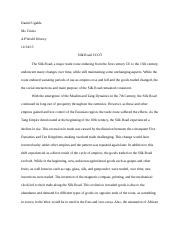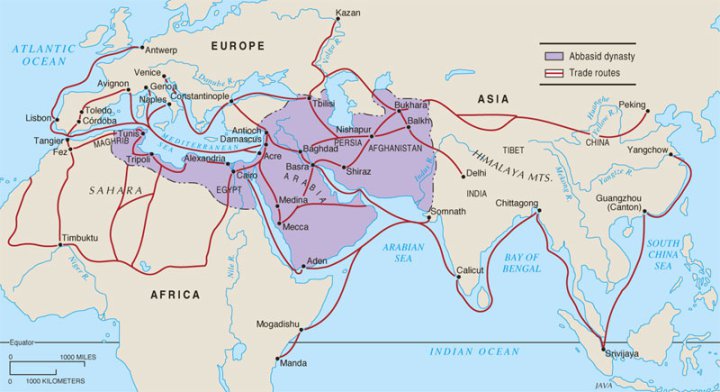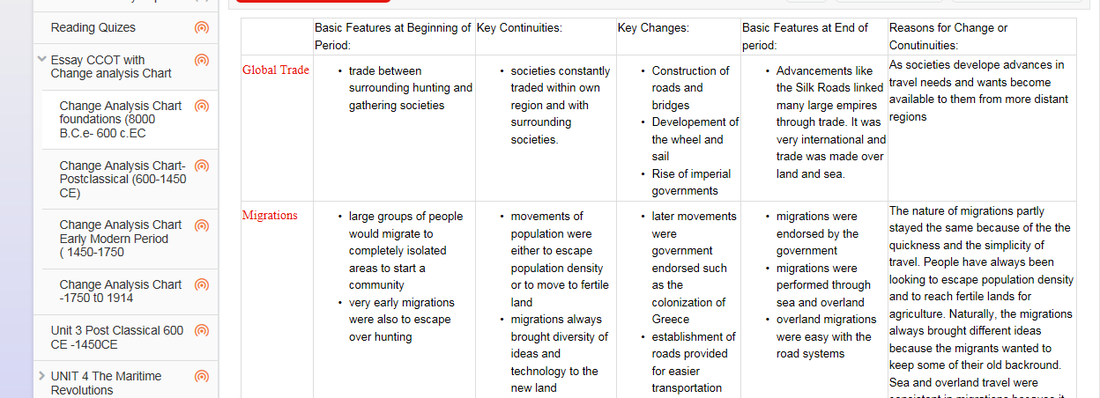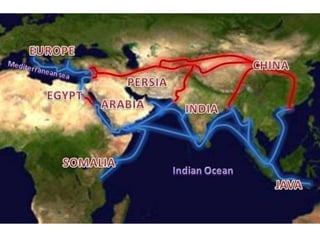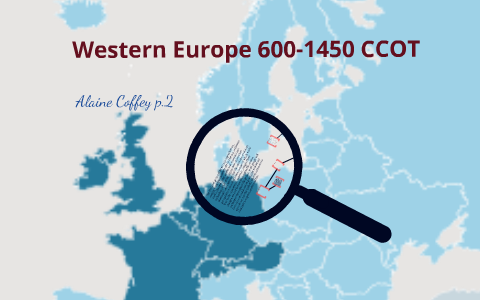The Silk Road was a network of trade routes that connected the East and West. It was a major factor in the cultural, economic, and political development of various civilizations and regions along its path. The Silk Road gets its name from the lucrative trade in Chinese silk that took place along the route, but it was also a conduit for the exchange of a wide variety of goods and ideas.
The Silk Road originated in the Han Dynasty of China (206 BC-220 AD) and was used as a means of communication and trade between the Chinese and the peoples of Central Asia and the Mediterranean. It stretched from the ancient capital of Chang'an (modern-day Xi'an) in China to the Mediterranean Sea, passing through Central Asia, the Middle East, and Europe.
The Silk Road was not a single, well-defined road, but rather a series of interconnected routes that crisscrossed through various regions and climates. Caravans of merchants and traders traveled along these routes on foot, on horseback, and by camel, carrying silk, spices, gold, and other valuable goods. The Silk Road was also a conduit for the exchange of ideas, religions, and cultures. Buddhism, for example, spread from India to China along the Silk Road, and the works of Greek philosophers and scientists were translated into Chinese and other languages.
As the Silk Road developed and expanded, it became a melting pot of cultures and a hub of international trade. It was a place where merchants from different parts of the world came together to exchange goods and ideas. Along the route, caravanserais (inns) were built to provide travelers with food, shelter, and security. These caravanserais also served as centers of trade and commerce, where merchants gathered to sell their goods and negotiate deals.
The Silk Road played a crucial role in the economic and cultural development of various civilizations along its path. It facilitated the exchange of goods and ideas, and contributed to the spread of religions and cultures. However, the Silk Road was not without its challenges and dangers. It was a treacherous journey through inhospitable terrain, and traders and travelers faced threats from bandits and robbers. In addition, the Silk Road was vulnerable to political and economic instability, as various empires and kingdoms along the route rose and fell.
The Silk Road declined in importance during the Ming Dynasty (1368-1644) as the Chinese government imposed strict controls on trade and commerce. In the modern era, the Silk Road has regained some of its former prominence as a result of the increasing globalization of trade and the development of new transportation and communication technologies. Today, the legacy of the Silk Road can still be seen in the cultural, economic, and political interactions between the East and the West.
